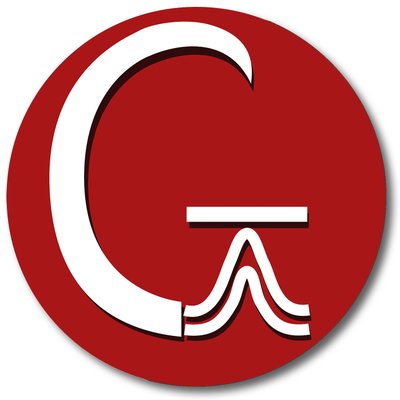
¶ Gaussian
Gaussian is one of the most popular programs for modeling molecular systems using quantum mechanics. It is widely used by chemists, physicists and engineers in the field of theoretical and experimental chemistry. The program is especially valuable in studying systems where rapid changes and short-lived intermediate states make experimental observation difficult or impossible. Gaussian enables simulations at the ab initio level as well as at more approximate levels (e.g., semi-empirical methods).
¶ Available versions
You can check on website , automatically updated.
¶ Access Conditions
The requirements are:
- Account on the e-science.pl platform
- Active "Process on Supercomputer" service
If you do not meet the above requirements, please click here
¶ License
WCSS holds the license for its users to access the Supercomputer
¶ How to use
The following command is used to submit jobs to the queue system:
sub-gaussian-2016-C.01
Running the script without any arguments will display a hint on how to specify them:
sub-gaussian-2016-C.01
Usage: /usr/local/bin/bem2/sub-gaussian-2016-C.01 FILE PARAMETERS
Parameters:
-p PARTITION Set partition (queue). Default = normal
-r RESERVATION Set reservation. Default =
-c CORES Up to 48. Default = 1
-m MEMORY In GB, up to 180 (must be integer value). Default = 10 + 1 (gauss safety margin)
-t TIME_LIMIT In hours. Default = 6
-f run formchk on the checkpoint file on the end
-d PATH input file directory, default -- current directory
--copy FILE1 FILE2 ... copy additional [checkpoint] files to working directory
Sub-scripts should be run only on the access node ui.wcss.pl
¶ Packages formchk and cubegen
If you need to use tools such as
formchk,cubegen, etc., this should be done within an interactive task:
sub-interactive
module load gaussian/16.C.01
formchk
¶ Information on usage
In case of using the program, the authors require the following work to be cited in publications on the website Gaussiana
Gaussian 16, Revision C.01, M. J. Frisch, G. W. Trucks, H. B. Schlegel, G. E. Scuseria, M. A. Robb, J. R. Cheeseman, G. Scalmani, V. Barone, G. A. Petersson, H. Nakatsuji, X. Li, M. Caricato, A. V. Marenich, J. Bloino, B. G. Janesko, R. Gomperts, B. Mennucci, H. P. Hratchian, J. V. Ortiz, A. F. Izmaylov, J. L. Sonnenberg, D. Williams-Young, F. Ding, F. Lipparini, F. Egidi, J. Goings, B. Peng, A. Petrone, T. Henderson, D. Ranasinghe, V. G. Zakrzewski, J. Gao, N. Rega, G. Zheng, W. Liang, M. Hada, M. Ehara, K. Toyota, R. Fukuda, J. Hasegawa, M. Ishida, T. Nakajima, Y. Honda, O. Kitao, H. Nakai, T. Vreven, K. Throssell, J. A. Montgomery, Jr., J. E. Peralta, F. Ogliaro, M. J. Bearpark, J. J. Heyd, E. N. Brothers, K. N. Kudin, V. N. Staroverov, T. A. Keith, R. Kobayashi, J. Normand, K. Raghavachari, A. P. Rendell, J. C. Burant, S. S. Iyengar, J. Tomasi, M. Cossi, J. M. Millam, M. Klene, C. Adamo, R. Cammi, J. W. Ochterski, R. L. Martin, K. Morokuma, O. Farkas, J. B. Foresman, and D. J. Fox, Gaussian, Inc., Wallingford CT, 2016.
¶ Acknowledgments
All publications, including doctoral and diploma theses, using the results of calculations performed on WCSS computers should include acknowledgments to the character (respectively to the language of publication) in accordance with the current regulations
"Created using resources provided by Wroclaw Centre for Networking and Supercomputing (http://wcss.pl)"
"Opracowano przy użyciu zasobów udostępnionych przez Wrocławskie Centrum Sieciowo-Superkomputerowe (http://wcss.pl)”
¶ I have a problem with...
- No e-science account If you do not have an e-science account, register.
- No "Process on a Supercomputer" service Submit a request for a new service or modification of an existing one.
¶ See also
¶ Documentation Gaussian
¶ Recommennded publications Gaussian
- Home website Gaussian
- Book Exploring Chemistry with Electronic Structure Methods, 3rd ed. 2015
- Quick start for the beginners
- Gaussian in practice
- Dr. Joaquin Barroso's blog
- Book J. B. Foresman and Æ Frisch, Exploring Chemistry with Electronic Structure Methods
¶ Documentation KDM
- Who can become a Supercomputer user?
- How to gain access to the Supercomputer?
- Service Requests Instructions on how to fill out online forms
- users.e-science.pl Manage teams, users, and access rights
- OpenOnDemand Graphical access to applications on the Supercomputer
- Resource usage register How to check available resources in a service?
- HPC info Detailed information about resource usage in jobs and services
- set-default-service Change the default service when submitting jobs
- Sub-scripts Specially prepared scripts for launching specific versions of a given program
- Modules Use the
modulemechanism
The full version of the user documentation is available here
If you do not find a solution in the above documentation, please contact us at kdm@wcss.pl